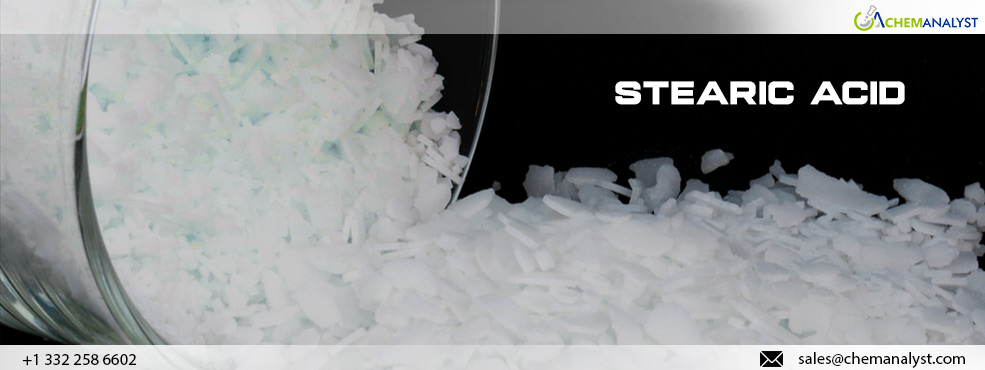US Stearic Acid Prices Depreciate in April as Demand from Automotive Sector Subdues
- 10-May-2024 5:25 PM
- Journalist: Jung Hoon
In the first week of May 2024, the US market witnessed a slight downturn in Stearic Acid prices, decreasing by approximately 1%, while prices remained stable in Indonesia. This shift was primarily attributed to a decrease in demand from the rubber industry, particularly within the automotive sector, which saw a notable 2.2% decline in sales during April 2024. Contributing factors to this decline in the prices of Stearic Acid included delayed seasonal demand and an increase in inventories, which prompted US suppliers to clear stocks at discounted rates to manage existing inventory levels.
Concurrently, the US electric vehicle (EV) market faced challenges, leading major manufacturers to implement price reductions and announce production cuts consequently leading to a low demand of Stearic Acid. Tesla experienced a significant decline of 18% in sales in April 2024, while Ford reported a 2.4% decrease in US sales, largely driven by reduced demand for specific vehicle models. Ford's decision to postpone the launch of a new electric SUV in Canada due to weak demand further underscored the downward trend, impacting the demand for components like Stearic Acid used in EV manufacturing.
The overall slump in automotive sales was further compounded by diminishing returns from tax refunds, resulting in many potential buyers adopting a wait-and-see approach. Additionally, April 2024 posed challenges for the US manufacturing sector, as declining new orders led to reduced purchasing activity and depleted pre-production inventories. Consequently, due to the scaling down of production, US suppliers refrained from procuring further Stearic Acid inventories from Indonesia. While output prices saw a modest rise, input costs surged, indicating potential upward pressure on selling prices in the near term. Decreased buying and hesitance to stockpile during a drop in new orders led to fewer Stearic Acid inventories in the US market.
Looking ahead, Stearic Acid prices are anticipated to experience further depreciation, driven by mounting inventories of palm oil feedstock in Indonesia due to decreased exports. Forecasts from the Indonesian Palm Oil Association (GAPKI) project palm oil exports of 29.5 million metric tons in 2024, down from 30.25 million tons the previous year. This projected surplus is expected to decrease Stearic Acid production costs, facilitating more affordable imports globally.
In conclusion, the complex interplay of factors such as weakened automotive demand, EV market challenges, and fluctuations in raw material supply are shaping the trajectory of Stearic Acid prices in the US and global markets. Observing these trends provides valuable insights for industry stakeholders to navigate market dynamics and adapt strategies accordingly.



